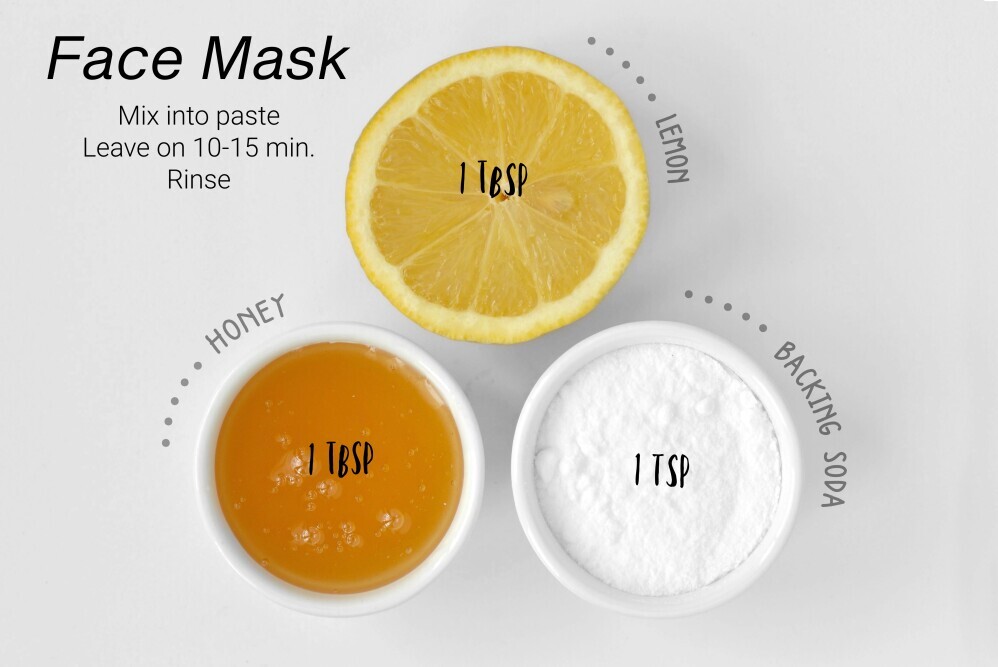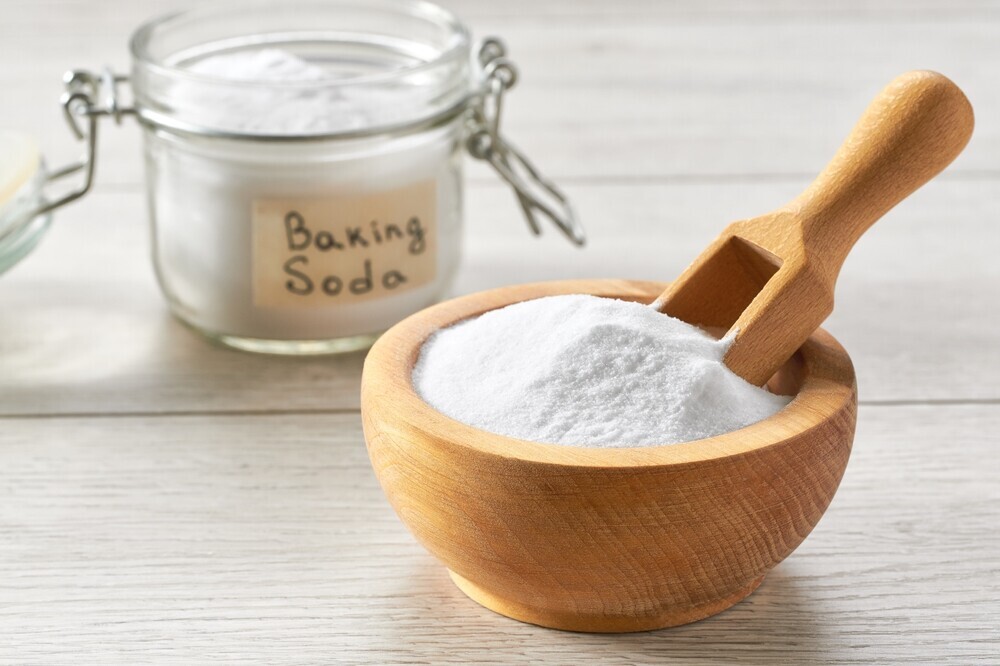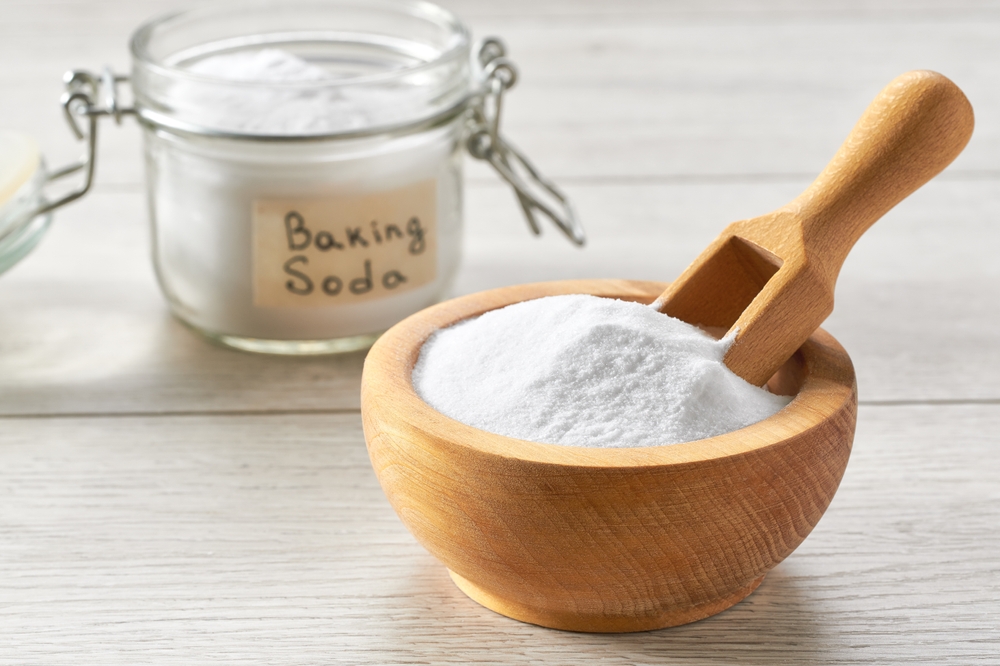There’s a ton of anti-aging home remedies you can find. Just do a quick search on your favorite app, and voila, videos galore spouting how miraculous their concoction is!
While there are definite benefits to using these home remedies, there may also be some risk to your skin.
Specifically speaking, baking soda. Skin irritation, pH imbalance, and allergic reactions are just a few of the risks.
But let’s get into how baking soda can be beneficial for your skin, shall we?
What are the benefits of baking soda in skincare?
- Exfoliation: Baking soda can be mixed with water to create a paste that gently exfoliates the skin, removing dead skin cells and promoting cell turnover.
- Face Mask: A baking soda mask, combined with ingredients like honey or yogurt, can help brighten the skin and reduce the appearance of fine lines.
- Acne Treatment: Due to its alkaline nature, baking soda can help balance skin pH and reduce acne, which can contribute to an aged appearance.
- Brightening Agent: Mixing baking soda with lemon juice can create a brightening treatment for dark spots and uneven skin tone (use cautiously due to acidity).
- Soothing Baths: Adding baking soda to a bath can help soothe irritated skin and maintain moisture, promoting overall skin health.
- Foot Soak: Using baking soda in foot soaks can soften the skin and improve the appearance of rough, aging feet.
Potential Side Effects of Baking Soda
Now that you know the benefits of using baking soda in your skincare, it’s time to find out if it’s actually worth the risk.
Using baking soda in skincare can have several side effects, particularly if not used correctly.
Here are some potential side effects:
- Skin Irritation: Baking soda can be abrasive and may cause irritation, redness, or a burning sensation, especially on sensitive skin.
- pH Imbalance: Baking soda has a high pH (alkaline), which can disrupt the natural acidity of the skin, potentially leading to dryness or irritation.
- Allergic Reactions: Some individuals may experience allergic reactions, such as rashes or hives, after using baking soda.
- Dryness: Overuse can strip the skin of its natural oils, leading to excessive dryness and flakiness.
- Photosensitivity: Combining baking soda with certain acidic ingredients (like lemon juice) can increase sensitivity to sunlight.
- Clogged Pores: If not rinsed off properly, baking soda can leave a residue that may clog pores.
To minimize these risks, it’s advisable to use baking soda in moderation, perform a patch test, and follow up with a good moisturizer.
Dermatologists Don’t Approve This Ingredient
For every social media video singing praises of baking soda, you can find a dermatologist warning you about it.
This is especially true for those with sensitive skin or inflammatory skin conditions.
However, if you’ve tried baking soda as a cleanser, or found a certain recipe, and it works for you, by all means keep using it!
And please share your experience and recipe in the comments below!
Recipes
1. Baking Soda Scrub
Ingredients:
2 tablespoons baking soda
1 tablespoon water or honey
Instructions:
Mix the baking soda with water or honey to form a paste.
Gently scrub your face in circular motions for 1-2 minutes.
Rinse with warm water and pat dry.
2. Baking Soda and Coconut Oil Mask
Ingredients:
1 tablespoon baking soda
1 tablespoon coconut oil
Instructions:
Combine baking soda and coconut oil to create a paste.
Apply to your face, focusing on dry areas.
Leave on for 10-15 minutes before rinsing off.
3. Baking Soda Bath Soak
Ingredients:
1 cup baking soda
Optional: Essential oils (like lavender or eucalyptus)
Instructions:
Add baking soda to your bathwater.
For added relaxation, include a few drops of essential oil.
Soak for 20-30 minutes to soothe and soften skin.
4. Baking Soda and Aloe Vera Gel Mask
Ingredients:
1 tablespoon baking soda
2 tablespoons aloe vera gel
Instructions:
Mix baking soda and aloe vera gel until smooth.
Apply to your face and leave on for 10-15 minutes.
Rinse with warm water.
5. Baking Soda Foot Soak
Ingredients:
1/2 cup baking soda
Warm water
Instructions:
Fill a basin with warm water and add baking soda.
Soak your feet for 15-20 minutes to soften skin and reduce odor.
Tips:
Always do a patch test before trying new recipes.
Use baking soda sparingly, as it can be abrasive for some skin types.
Follow up with a moisturizer after using baking soda treatments.
